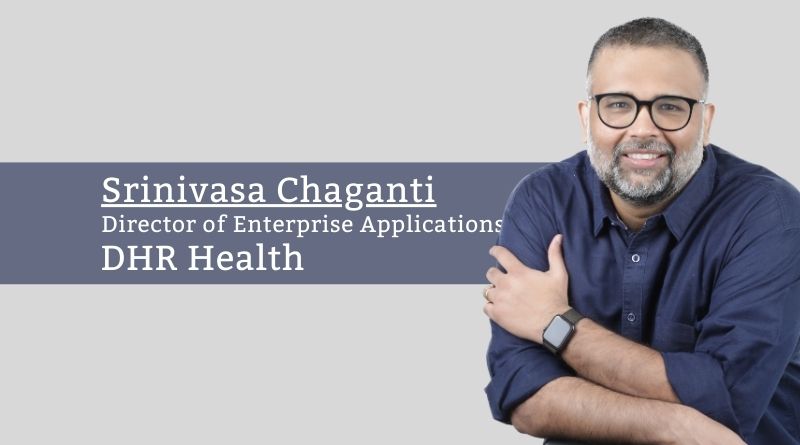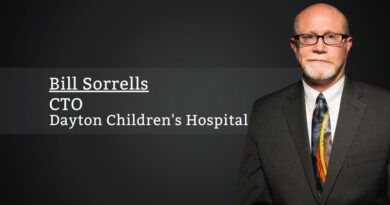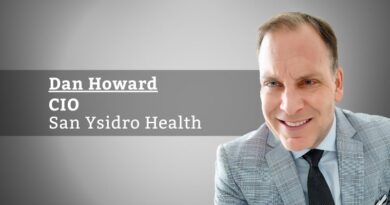Navigating Regulatory Changes for Healthcare Providers: Optimizing Compliance and Efficiency
By Srinivasa Chaganti, Director of Enterprise Applications, DHR Health
Regulatory changes in healthcare often arrive like sudden disruptions, throwing clinical workflows out of sync and distancing patients from quality care. Yet these regulations provide the crucial pathway towards ensuring patient safety and enabling excellence in healthcare delivery. The challenge for physician-owned health systems and smaller community hospitals intensifies as they must weather these regulatory storms while operating efficiently across disparate systems and infrastructures.
To truly grasp the profound impact of regulations, one must recognize their vital significance in safeguarding patient welfare. Like lighthouses guiding ships through turbulent storms at sea, healthcare regulations serve as indispensable guardrails on the delivery highway, directing providers toward practices that uphold the pillars of safety, efficacy, and ethical conduct.
In an era dominated by digital innovation, interoperability becomes our guiding compass, facilitating seamless data exchange and communication among diverse systems and stakeholders.
Let’s explore this analogy further:
Navigating Healthcare’s Seas: Envision healthcare as a vast ocean, with patients and providers navigating its waters. Regulatory changes act as powerful currents and tides, influencing the direction and pace of this journey. Without these regulatory guardrails, healthcare delivery could become akin to sailing without a compass, risking patient safety and compromising the quality of care.
Guardrails of Patient Safety: Just as guardrails prevent vehicles from veering off dangerous cliffs, regulations establish crucial boundaries to ensure patient safety remains the top priority. They meticulously dictate standards for documentation, medication protocols, treatment practices, and more, guiding healthcare providers toward practices that prioritize patient well-being above all else.
Highway of Delivery: Picture healthcare as a bustling highway, with patients moving along the lanes toward their respective destinations. Regulatory changes shape this highway, determining the speed limits, road signs, and traffic rules governing the journey. By diligently adhering to these regulations, healthcare providers ensure a smooth and safe passage for patients, minimizing risks and maximizing positive outcomes.
Consistent Care Delivery: Envision healthcare as a relay race, with the baton of care being passed from one provider to another. Regulations establish the rules of this race, ensuring that the baton is passed smoothly and efficiently without any hiccups or mishaps. By adhering to these regulations, healthcare providers maintain a consistent level of care delivery, ensuring that every patient receives the same high standard of quality treatment, regardless of where they are on their healthcare journey.
Accountability and Transparency: Regulations promote accountability and transparency within the healthcare system. They require healthcare providers to adhere to strict documentation standards, ensuring that every decision and action is recorded and traceable. This transparency fosters trust and confidence between patients and their care providers, bolstering the crucial patient-provider relationship.
However, the ever-shifting regulatory landscape poses significant challenges, especially for community and physician-owned health systems with varying infrastructures and limited resources. Picture these healthcare institutions as a fleet of ships, each navigating its course through turbulent seas, where fragmented communication and data silos hinder the seamless delivery of optimal patient care.
To successfully navigate the regulatory maze while maintaining compliance and operational efficiency, health systems can employ strategic approaches:
- Embrace Innovation: Foster a culture of innovation within the organization, encouraging the exploration of novel solutions to regulatory hurdles. Streamline processes, enhance data security, and improve patient outcomes by leveraging emerging technologies such as AI and ML.
- Forge Strategic Partnerships: Cultivate collaborative relationships with regulatory agencies, professional organizations, and peer institutions. By sharing insights, best practices, and collective intelligence, health systems can strengthen their compliance efforts and navigate regulatory complexities more effectively through mutual support.
- Prioritize Patient-Centric Practices: Anchor every decision and action into the needs and preferences of patients. Implement personalized care plans, telehealth services, and other patient-centric initiatives to enhance patient engagement, satisfaction, and overall outcomes, fostering a culture of empowerment and partnership in healthcare delivery.
Furthermore, staying informed and maintaining vigilance is paramount in the face of regulatory changes. Just as navigators watch the horizon, healthcare systems must cultivate a culture of continuous learning and proactive compliance monitoring. By proactively anticipating regulatory shifts and mitigating risks, they can optimize their compliance efforts and adapt swiftly to emerging mandates.
In an era dominated by digital innovation, interoperability becomes our guiding compass, facilitating seamless data exchange and communication among diverse systems and stakeholders. Investing in integrated EHR systems is not merely a choice but a necessity, enabling healthcare organizations to navigate the regulatory seas with agility, precision, and foresight, ultimately reaching the shores of greatness in patient care delivery.
Collaboration also plays a crucial role in keeping health systems afloat during regulatory turbulence, providing them with an anchor to stand on during their regulatory journeys. By forging strategic partnerships with regulatory agencies, professional organizations, and peer institutions, health systems can share best practices, learn from collective experiences, and navigate common obstacles together, strengthening their resilience and adaptability.
Regulatory shifts in healthcare profoundly impact physicians, akin to navigating turbulent seas where each wave presents a new challenge. The enactment of legislation like the Health Information Technology for Economic and Clinical Health Act (HITECH) exemplifies this analogy vividly. HITECH’s primary objective was to revolutionize healthcare delivery by incentivizing the widespread adoption of EHRs, promising to usher in an era of enhanced patient care quality and efficiency.
However, the journey towards integrating EHR systems into medical practice was fraught with obstacles. Physicians encountered the daunting task of mastering unfamiliar interfaces and grappling with increased documentation burdens, threatening to disrupt established workflows and patient care routines that had been finely tuned over years of experience.
Dr. Atul Gawande, a renowned author and authority in healthcare compliance and innovation, emphasizes the importance of adopting a strategic and proactive approach to navigate regulatory transitions effectively. In his book, “The Checklist Manifesto,” he advocates for comprehensive training programs, robust support mechanisms, and a culture of continuous improvement to empower physicians in embracing change and leveraging regulatory mandates as catalysts for driving positive outcomes for patients. Through proactive adaptation and a steadfast commitment to excellence, physicians can weather regulatory storms and chart a course toward a brighter future in healthcare delivery.
As we embark on the future of healthcare delivery, let us draw wisdom from ancient mariners and modern navigators alike. The famous American rock band, The Doors, inadvertently suggested the right kind of wisdom applicable to healthcare readiness and ever-evolving regulations—”Keep our eyes on the road and hands upon the wheel”—to “Break on through the other side” of regulatory change with grace and confidence, heading towards an improved health and wellness outlook for all!



